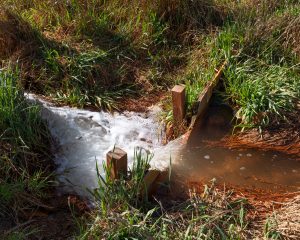
Local Environmental Action Demanded (LEAD) Agency began in 1997 to educate the Miami, OK community about one of the nation’s largest and most complex environmental threats—the Tar Creek Superfund Site in their own backyard. A century’s worth of mining-related waste has left hazardous substances, particularly cadmium, lead, and zinc, in Tar Creek – twice named one of America’s “Top 10 Most Endangered Rivers.” Tar Creek flows through Miami, capital of the Miami Tribe of Oklahoma and home to nine federally recognized tribes. The area, with poverty rates 1½ times the national average, has been historically impacted by flooding – 250 homes affected by contaminated floodwaters in 2019 in Miami alone – and flooding is expected to escalate due to climate change. LEAD Agency demands the EPA, the Federal Energy Regulatory Commission, and the State of Oklahoma develop a cleanup plan that restores the natural integrity of Tar Creek and protects the interconnected ecosystem that depends on these waters for survival.

Water contaminated with heavy metals, including iron, zinc, lead,
cadmium, and nickel, rises to the surface from abandoned and flooded mine cavities. The contaminated surface water stains Tar Creek and the surrounding landscape deep red. Source: Todd Stewart
Against the backdrop of one of America’s most complex environmental disasters, LEAD Agency has become a state leader – partnering with city, county, state and tribal governments; higher education institutions; and national environmental non-profits. Heading up a first-of-its-kind State Organizing Committee, they are creating a coalition of frontline groups to mobilize residents into action, including petitions, meetings with city and state officials, and legal and peaceful protest. LEAD Agency’s Indigenous-led, 9-person team combats the triple threats facing the region’s residents: flooding, extreme heat, and toxic mine-waste contamination in roads, homes, and infrastructure. Key achievements include an interactive floodplain map showing property risks; surveys of 700+ community members documenting concerns and buyout interest; a 40,700 square foot rain garden at Peoria Housing Authority mitigating flood risk; signage warning about chemical exposure hazards; and the annual Tar Creek Conference, a national environmental gathering which unites scientists, regulators, tribal leaders, and community members to address immediate health risks while pushing government agencies toward comprehensive solutions. As Executive Director Rebecca Jim says, “Tar Creek deserves to flow, to nurture life, to be what she was destined to be.”